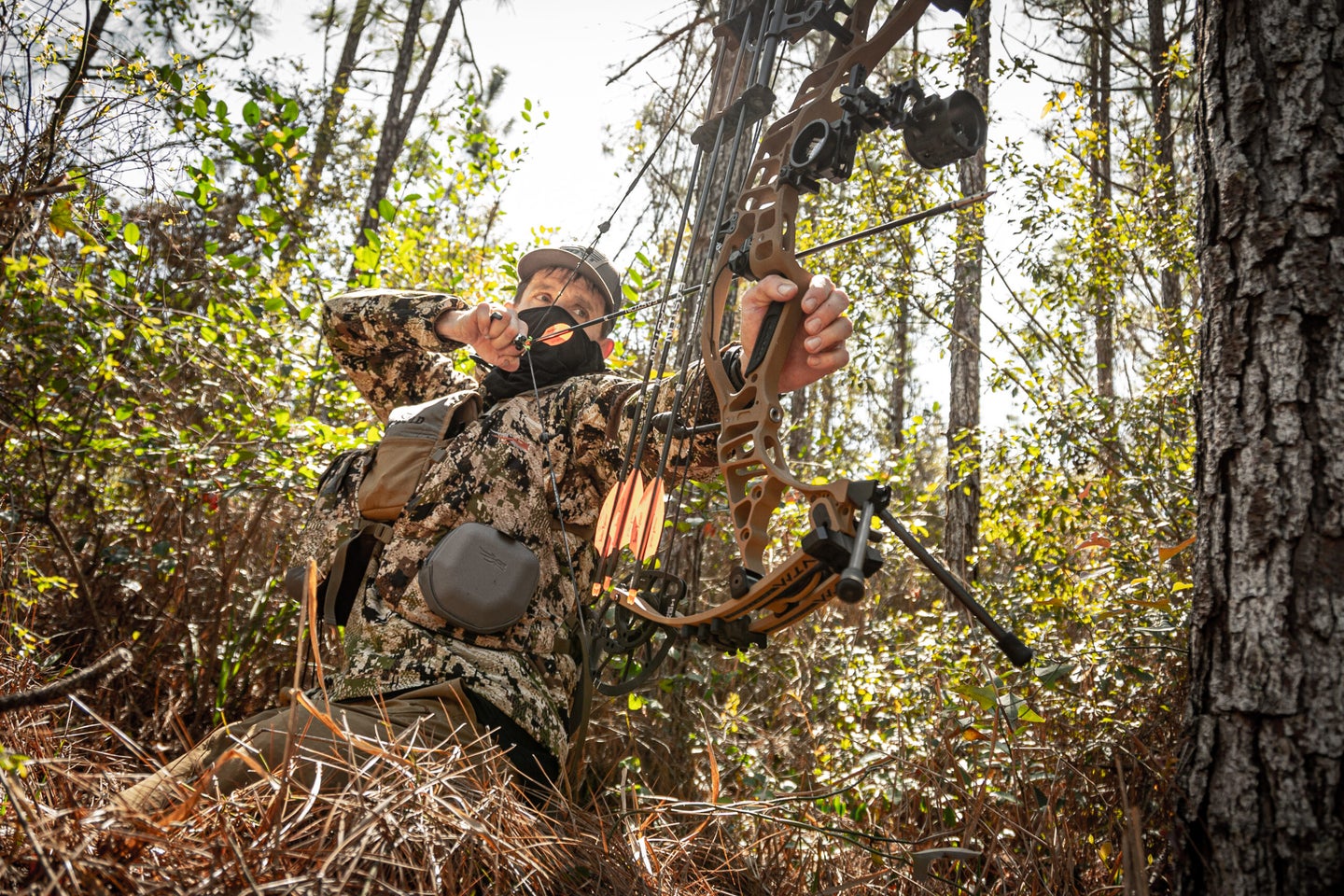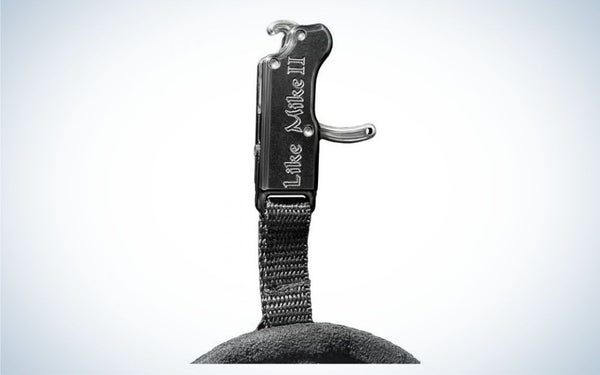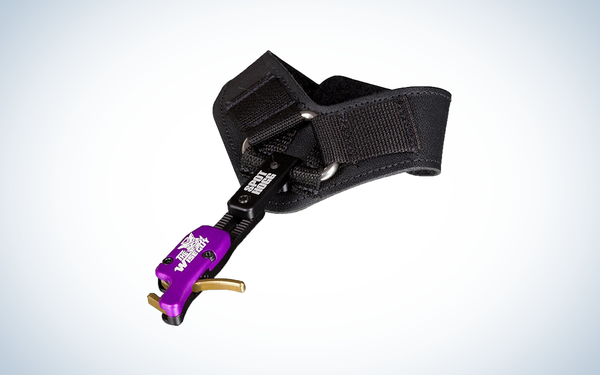| Best Overall |
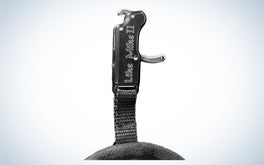
|
Carter Like Mike II | SEE IT |
LEARN MORE
|
Summary
The open-hook design paired with the crispest, no creep trigger makes it a tack driver. It has a nylon rope attachment, and this release can take a beating and keep on ticking. |
| Best for Bowhunting |
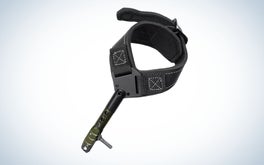
|
Scott Little Goose II | SEE IT |
LEARN MORE
|
Summary
This release has been responsible for more double-lung shots than you can imagine. It’s economical, feels great on the wrist and hand, and is bulletproof. |
| Best Thumb Release |
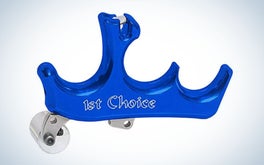
|
Carter 1st Choice | SEE IT |
LEARN MORE
|
Summary
This handheld release aid is light, airy, and feels great in hand. The barrel-style thumb release button promotes great thumb-to-button contact, and the aluminum on the barrel button is gridded and roughed up. |
We may earn revenue from the products available on this page and participate in affiliate programs. Learn more ›
Bow releases are the magic wand to bow hunters. Most have spent years—some decades—searching for the exact model and type of release that will help them put carbon in the 12-ring on a 3-D target and through the lungs of a gagger buck. If you’re new to the stick-and-string game, you’ll quickly learn that choosing the proper release isn’t as easy as walking into a sporting goods store, finding the release aid aisle, and selecting. Why? There are endless releases to choose from.
To help you with this buying process I’ve put together some of my favorite releases, which have all been tested and proven. Everything from thumb triggers and index finger releases to back-tension and resistance releases—here are the best bow releases for bowhunting.
- Best Overall: Carter Like Mike II
- Best for Bowhunting: Scott Little Goose II
- Best Double-Caliper Index-Finger: TruFire Max Edge Buckle Foldback
- Best Thumb: Carter 1st Choice
- Best Back-Tension (Hinge): T.R.U Ball HBC Quicksilver
- Best Resistance-Activated: Stanislawski PerfeX Resistance
- Best Hybrid: T.R.U. Ball GOAT
- Spot-Hogg Wiseguy Rigid
How We Picked The Best Bow Releases
I’ve been bowhunting and target shooting for more than 20 years, and during that time, I have shot a pile of releases. The recommendations in this article are tried-and-true. I’ve used each in the field as well as at the range. And through that testing process, I have fired thousands of arrows with these releases. I have never experienced a mechanical failure with any of the selected releases, and each allows for shooter customization in one way or another.
I want a crisp, clean release that allows me to let the release fire the bow. A release is a mechanical device; regardless of make, and these devices work best when the shooter doesn’t punch, jerk, or manually fire the release. Instead, when proper push-and-pull mechanics are used, the shooter relaxes the hand from the wrist down, the release breaks and the arrow hits home. Each release in this article promises mechanical perfection. They have all been tested from the plains to the hardwoods to the mountains, and each has proven its salt.

The Best Bow Releases: Reviews & Recommendations
Best Overall: Carter Like Mike II
Specs
- Heavy-duty head design
- Nylon rope attachment
- Comfortable strap
- Perfectly angled trigger
Pros
- Crisp, clean trigger
- Easy access tension screw
- Tension adjustment from 10 ounces to 3.5 pounds
- Repeatable accuracy
Cons
- Price
Make no mistake; this is the best index-finger release aid, single-caliper, double-caliper, and open-hook design I have ever shot. Though still heavy-duty, the case head has been shortened, which makes the release less bulky. The big story with the Like Mike II, though, is the customization of the trigger. A tension adjusting screw on the side of the release case allows for a tension range between 10 ounces and 3.5 pounds. This means shooters can opt for a hair-trigger, ultra-heavy trigger, or something in between. The trigger is as crisp as they come, and no creep means no panic.
Best for Bowhunting: Scott Little Goose II
Specs
- Five adjustment positions
- Velcro or Buckle wrist strap
- Single caliper
- Lightweight
- Durable
Pros
- Solid swivel connector
- Forward position trigger
- Slim trigger post
- Increased string clearance
Cons
- Limited tension adjustability
- Only a solid post, not a rope option
A legendary release aid that promises a clean arrow release and excellent fit and feel. The release is as durable as the day is long, and the new slimmed-down head makes it even more appealing. The forward position of the knurled trigger design maximizes draw length, and the archer can customize release length via a patented five-hole adjustment that is super easy to use. The single-caliper angled jaw design boosts string clearance and ups functionality. During my archery tenure, this has been my go-to index-finger release. It sports a slim design, and the single-caliper design means only one jaw of the release moves while the other stays in place. The strap is comfortable, and the release head is adjustable on the post.
Best Double-Caliper Index-Finger: TruFire Max Edge Buckle Foldback
Specs
- Foldback design
- Comfortable leather strap
- Quality trigger
- Easy to adjust
Pros
- 2.5 times more padding in the Buckle II strap
- Trigger functions on linear motion bearing
- Dual jaws for a clean release
- Lockable length adjust
Cons
- No Velcro strap option
- Extra padding in the strap retains moisture
This release is a winner because of its easy-to-operate, no-fail build. Whether making a length adjustment or tinkering with trigger travel, you’ll find the process elementary, which means you can spend more slinging purposeful arrows. The Foldback design is brilliant. I hate climbing into a treestand and having the head of my release hit the metal. This design prevents that; plus, it’s nice when walking the elk woods not to have the head of the release flopping this way and that. The length adjustment is lockable, which leads to increased shot-to-shot consistency, and the trigger is crisp and smooth. Another hat-tipper is you won’t find a more comfortable leather strap.
Best Thumb: Carter 1st Choice
Specs
- Lightweight
- Great fit and feel
- Barrel Adjustment
- Tension Adjustment
Pros
- Universal fit handle
- Self-closing jaw
- Set screw tension adjustment
- Great head-to-handle length ratio
Cons
- Price
- Lock button can be ultra stiff
When I shoot a thumb release, this is what I use. For hunting situations, especially in a treestand, I love the locking jaw, which means you can click the release on your D-loop and forget about it. Tension can easily be adjusted, and when you combine tension adjustment with a crisp trigger design that promotes excellent fit and feel, you can relax and execute. The length of the neck and release head matches many of Carter’s standard target models, which is a plus, and the barrel-style thumb button is easy to find. The feel of your thumb pad against the barrel promotes excellent functionality.
Best Back-Tension (Hinge): T.R.U Ball HBC Quicksilver
Specs
- Heavy brass handle
- Three-hole thumb post position
- No fail
- Easy to adjust
Pros
- Visual hot/cold adjust
- Multiple handle size options
- Gnarled thumb post for feel
- Deep recessed handle
- Clean break every time
Cons
- Price
- Tension unlock screw will strip
This is the release I went to when I started getting target panic three years ago, and I’ve not changed since. I hunt with it from east to west and shoot multiple 3D tournaments yearly. The release is crisp, and I love that it will attach to a wrist strap for hunting application purposes.
Used by top tournament pros across the globe, this hinge release is the creme de la creme of back-tension release aids. The heavy brass handle falls into the hand like butter, and the fingers grooves are deep to promote excellent fit and feel. The thumb post can be moved to a trio of locations, and once the appropriate screws are loosened, you can visually watch as you make the release hotter (speed up the sear) or colder (slow down the sear). The weight of the handle allows the release hand to fall into it, creating tension and causing the open hook of the release head to fire. The release is crisp and clean, and I’ve never had a single malfunction over thousands of shots. It also comes with the audible click engaged but can be turned off easily.
Best Resistance-Activated: Stanislawski PerfeX Resistance
Specs
- Multiple handle configurations
- Full package with four-finger extension
- Easy to set weight
- Dependable
Pros
- Consistent
- Repeatable
- Wide weight setting range
- Multiple thumb barrel options
Cons
- Almost too light
This resistance release is excellent because it’s a handheld design that operates like a back-tension; however, there is safety. The holding weight can be set to just above zero, up to 28 pounds. With your release poundage set, depress the thumb-button safety, draw your bow, climb into anchor, release the thumb button and start pushing and pulling. This release promises consistency to within +/- 1/8-pound from shot to shot, and the package comes with a pair of thumb barrels, and you can easily convert the release from a three-finger design to a four-finger. The open-hook jaw means quick D-loop hook up, and you’ll find that it’s ultra-clean when the release breaks over.
Best Hybrid: T.R.U. Ball GOAT
Specs
- Swap between thumb and hinge modes
- Heavy-duty brass and aluminum build
- Three- and four-finger options with extension
- Easy operation
Pros
- Multiple thumb-barrel positons
- Deep recessed handle
- Crisp and smooth in either mode
- Customization
Cons
- Price
- No wrist strap attachment
Bowhunters love hinge-style releases to practice with, but once the season arrives, they want the functionality of a thumb release. In the past, this meant buying two releases, and because handle and neck configurations were different, accuracy was affected. You get a hinge and a thumb in the same release with the GOAT, and swapping between the two takes seconds. This is one of my all-time favorite handheld release aids; if you give it a go, you may never put it down. It’s that sweet.
You’ll love the Flex Technology (ring finger—three-finger shooters and pinky—four-finger shooters) that allows the shooter to set infinite finger locations. The sizeable barrel promotes excellent fit and feel, and the release is nicely weighted. When in hinge mode, the release has an audible clicker that lets you know the release is loading up, but the clicker is easy to turn off for those that don’t want it.
Spot-Hogg Wiseguy Rigid
Specs
- Forward trigger design for max draw length and speed
- Adjustable length
- Open jaw for fast D-loop hook up
- Self-reloading hook
Pros
- Multiple strap choices
- Zero creep or trigger travel
- Ultra-durable
Cons
- No nylon rope attach option
One of the most popular index-finger releases of all time, Spot-Hogg’s Wise Guy is a meat-and-potatoes winner. I love the purple head, which makes the release pop, and the multiple strap options—the BOA strap is my favorite. But the best part about this release is the zero-creep, forward-position trigger that allows the shooter to settle the trigger into the first or second knuckle and execute a perfect release. The open-hook jaw also reduces D-loop wear and ensures rapid, consistent hook-up.

What To Consider When Choosing a Bow Release
You have many release aid options to choose from, and we haven’t even scratched the surface. So, how do you know which release is proper for you? First, go to a quality pro shop, not a major box store chain. A pro shop worth its salt will have multiple release options; you must test and tinker with as many as possible before making an informed buying decision. Plus, when visiting a pro shop, you will receive professional instruction.
Comfortability & Confidence
While shooting different releases, forget what is cool, what is trending on social media, and what anyone else says. Choose the make and model that feels best and fills you with shooting confidence. Archery is all about trust, and being your release is what triggers your bow into action; you must have complete faith in it.
Pursuit
Other things to consider include if you plan to use the release just for bowhunting, or if you plan to use it for bowhunting, target archery, and 3-D. Most bowhunters, especially those that don’t suffer from target panic, prefer an index finger release due to its simplicity, function, and that they attach it to the wrist. Many bowhunters who shoot year-round and compete in indoor and outdoor tournaments opt for a handheld release. Once mastered, a handheld release will boost accuracy and creates a more consistent anchor point for the archer.
Index-Finger Releases
This is the most popular style of release. Index activation requires the archer to press a trigger; some triggers are skinny posts, while others resemble a rifle trigger. The release attaches to a buckle or Velcro strap, which the archer attaches to the wrist. You’ll notice open-hook index-finger releases, single-caliper, and double-caliper makes. All are effective, but you’ll find hundreds of designs promising to make you more accurate, making index-finger selection difficult.
Handheld Releases
You’ll also see several handheld releases in the form of thumb, back-tension (hinge), and resistance. These releases earned their name because they traditionally don’t attach to the wrist but are held in hand. At one point, handheld releases were used more by the target archery crowd. Today, due to their customization, design, functionality, and ability to help archers achieve a repeatable anchor point, they are coveted by the bowhunting masses. Some handheld designs, like thumb-activation models, are simple. Like an index finger, thumb releases have a trigger, but the trigger is depressed by the thumb. Back-tension, or hinge releases, is another animal. These releases have no trigger. Instead, the hook-style jaw of the release sports a sear that rides on a half-moon. Tension, which the archer produces by driving the bow arm into the target and the release elbow back while relaxing the hand from the wrist down, causes the sear to break and the arrow to fly. It sounds more complicated than it is, and these releases are excellent for curing target panic, which is the fear of putting your pin on a target. Then there are resistance releases. Most mirror the specs of a back-tension but come with a safety to prevent accidental arrow discharge.

FAQs
Q: What bow release is best?
This question will never be answered because a release that feels great to one archer and promotes remarkable accuracy won’t necessarily do the same for every archer that uses that same release. Like many things in archery, release choice is a matter of personal preference.
Q: How much does a bow release cost?
It depends on the features of the release. Traditionally, index-fingers are the least expensive, and some great makes and models will run you under $100. As you add features and release material improves, the price goes up. Most handheld release models run between $150 and $250; however, it’s not uncommon for a top-tier hinge, thumb, or resistance release to wear a price tag over $300.
Q: Who makes the best archery releases?
This is another debate that will never be settled because there are so many great release makers out there; I will note you can’t go wrong with T.R.U. Ball, Scott, and Carter.
Q: How do you use a bow release?
Depending on the type of release, you wear the release around your wrist or hold it in your hand. When firing the release, shooters will depress a trigger with their index finger or thumb. There is no trigger when shooting a tension-activated release like a hinge-style release or a resistance release, and activation depends on back tension or hand rotation.
Q: Can you shoot a compound bow without a release?
Yes, shooting with a finger tab is still possible, but this release method is nearly extinct due to the speed and design of modern-day bows.
Best Bow Releases: Final Thoughts
- Best Overall: Carter Like Mike II
- Best for Bowhunting: Scott Little Goose II
- Best Double-Caliper Index-Finger: TruFire Max Edge Buckle Foldback
- Best Thumb: Carter 1st Choice
- Best Back-Tension (Hinge): T.R.U Ball HBC Quicksilver
- Best Resistance-Activated: Stanislawski PerfeX Resistance
- Best Hybrid: T.R.U. Ball GOAT
- Spot-Hogg Wiseguy Rigid
Don’t take the advice of another shooter as gospel, and stay away from social media trends. Release choice is highly personal—as personal and vital as bow choice—and the only way you’ll ever find the perfect-for-you release is to shoot as many makes and models as possible before making a choice. Never settle. New releases hit the market each year, and it’s never a bad idea to try something new, especially if you feel your accuracy is waning or you start struggling with target panic.
Why Trust Us
For more than 125 years, Field & Stream has been providing readers with honest and authentic coverage of outdoor gear. Our writers and editors eat, sleep, and breathe the outdoors, and that passion comes through in our product reviews. You can count on F&S to keep you up to date on the best new gear. And when we write about a product—whether it’s a bass lure or a backpack—we cover the good and the bad, so you know exactly what to expect before you decide to make a purchase.
